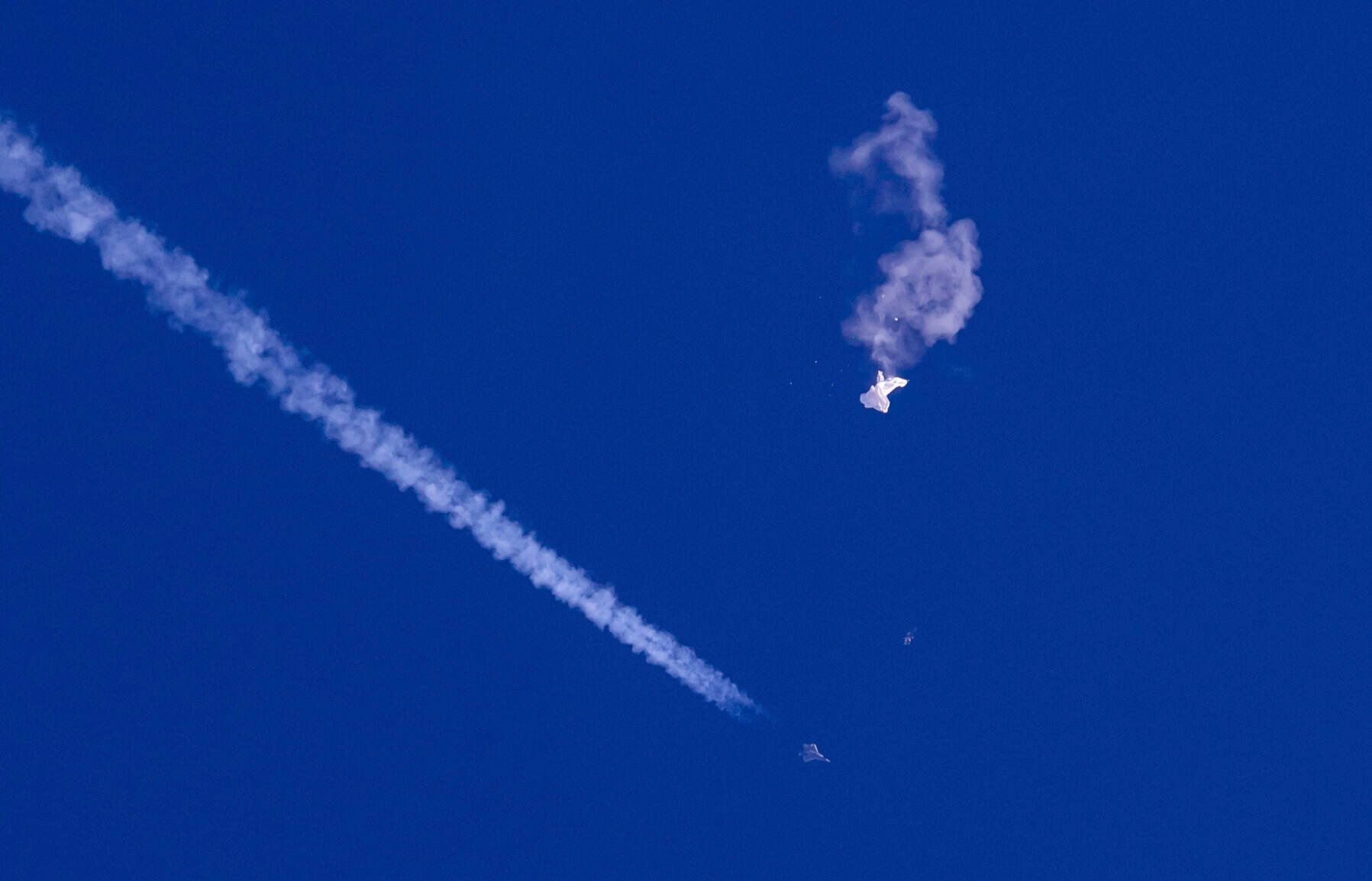Balloon bursts hopes for end to spiraling US-China tensions
WASHINGTON — Monday was supposed to be a day of modest hope in the U.S.-China relationship. Secretary of State Antony Blinken was going to be in Beijing, meeting with President Xi Jinping in a high-stakes bid to ease ever-rising tensions between the world’s two largest economies.
Instead, Blinken spent the day in Washington after abruptly cancelling his visit late last week as the U.S. and China exchanged angry words about a suspected Chinese spy balloon the U.S. shot down.
As fraught as the U.S.-China relationship was ahead of Blinken’s planned trip, it’s even worse now and there’s little hope for it improving soon.
Meanwhile, U.S. officials said Monday that improvements ordered by President Joe Biden to strengthen defenses against Chinese espionage helped identify last week’s spy balloon — and determine that similar flights were conducted at points during the Trump administration.

Chad Fish via AP
The remnants of a large balloon drift Saturday above the Atlantic Ocean, just off the coast of South Carolina with a fighter jet and its contrail seen below it.
White House national security adviser Jake Sullivan said Monday that after Biden took office, the U.S. “enhanced our surveillance of our territorial airspace, we enhanced our capacity to be able to detect things that the Trump administration was unable to detect.”
Before Monday, U.S. officials said at least three times during the Trump administration and at least one other time during Biden’s time as president balloons crossed American airspace, but not for this long.
In those instances, the United States determined the balloons belonged to China only after they left U.S. airspace, said Gen. Glen VanHerck, head of U.S. Northern Command.
“I will tell you that we did not detect those threats,” VanHerck said of his military command. “And that’s a domain awareness gap that we have to figure out.” He added that the U.S. intelligence community “after the fact” informed his command about the balloons.
China accused the United States on Monday of indiscriminate use of force in shooting down the balloon, saying it “seriously impacted and damaged both sides’ efforts and progress in stabilizing Sino-U.S. relations.”
The U.S. shot down the balloon off the Carolina coast Saturday after it traversed sensitive military sites across North America.
Vice Foreign Minister Xie Feng said he lodged a formal complaint with the U.S. Embassy on Sunday over the “U.S. attack on a Chinese civilian unmanned airship by military force.”
“However, the United States turned a deaf ear and insisted on indiscriminate use of force against the civilian airship that was about to leave the United States airspace, obviously overreacted and seriously violated the spirit of international law and international practice,” Xie said.
The setback comes at a time when both sides look for a way to potentially extricate themselves from a low point in ties that has had the world on edge.
White House National Security Spokesman John Kirby noted Monday that Blinken’s trip was delayed, not canceled. But prospects for rescheduling remain uncertain.
“I would put this at a six” on a scale of 10, said Danny Russel, a China expert and former assistant secretary of state for East Asian and Pacific affairs in the Obama administration, on the damage to current diplomatic efforts between the two countries.
“The signals I see suggest that there has to be a pause and a line drawn under the incident but once the drama has gone through its final act, there seems to be every intention to re-engineer a trip by the secretary of state,” said Russel, who is now vice president for international security and diplomacy at the Asia Society Policy Institute.
It’s not that the U.S. and China don’t talk — it’s that they talk from extremely divergent points of view with very little leeway for either to step back from entrenched positions that are often directly related to political conditions at home.
Military-to-military channels are used, but they are hindered by increasing Chinese incursions into Taiwanese air defense zones and aggressive actions in the South China Sea. The result is the U.S. stepped up reconnaissance flights and warship voyages through the Taiwan Strait.
Diplomatic channels remain open, but for several years they have been dominated by disagreements rather than grounds for potential cooperation and they are now crowded by complaints from both sides over the balloon.
Biden and Xi agreed to Blinken’s visit during a meeting in November in Indonesia.
Biden may have been hoping that his top diplomat would return from China with a measure of progress on issues ranging from trade, Indo-Pacific security and climate change to human rights and the status of Taiwan. Instead, he now faces a domestic political maelstrom just ahead of his State of the Union speech to Congress on Tuesday.
Republican lawmakers have been harshly critical of what they say was Biden’s weak response to the presence of the balloon over U.S. airspace. New GOP House speaker Kevin McCarthy’s expected trip to Taiwan this year is likely to be accompanied by new complaints about the administration’s approach.

